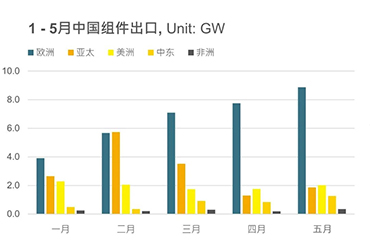
Although the price of photovoltaic supply chain has continued to be strong due to the high price of raw materials since 2022, the global demand for photovoltaic and other renewable energy has continued to rise under the energy supply shortage caused by the wave of energy transformation and international conflicts. According to PV InfoLink's analysis of China's customs export data, China's PV module exports in May reached 14.4GW, a year-on-year increase of 95%; the cumulative module exports from January to May reached 63.4GW, a year-on-year increase of 102%, and demand grew Pretty strong. From the perspective of geographical divisions, China's module exports from January to May in each of the major regional markets have grown quite strongly, with an increase of more than 40% compared to the same period last year. On the whole, except for the Asia-Pacific market, which has fluctuated greatly after India imposed BCD tariffs in April, the demand for Chinese modules in other regional markets is relatively stable, and the European market is growing month by month. European market As of May, seven countries have imported more than 1GW of PV modules from China. Among them, the Netherlands, the largest importer and a major European transshipment port, has even imported 16.5GW of modules, a year-on-year increase of 100%. The Netherlands is expected to this year. There will be a 4GW component requirement. This year, Germany and Spain, which are the top two in terms of module demand in the European market, imported 2.1 and 4.7GW of modules in total, and the year-on-year growth has more than doubled. Germany and Spain are expected to have a module demand of 7.0 GW this year. Other countries with estimated module demand exceeding 1GW, such as Poland, Greece, Portugal and France, have also imported more than 1GW of Chinese modules. The European market will still be the region with the highest demand for photovoltaic products outside China this year. As the renewable energy policies of European countries become clearer, for example, Germany proposed a new Renewable Energy Act (EEG) bill on 4/8, planning to achieve a cumulative photovoltaic installation of 215GW before 2030, and the annual installation volume before 2025 will gradually increase To 18GW, the annual installed capacity in the next five years will reach 22GW. The policies of the EU and other European countries are also gradually planned. Under the general trend of demand growth, the European market will still be the main export of Chinese modules in the future. With the clear growth path of European market demand, PV InfoLink has raised the module demand in the European market for the whole year of 2022, which is expected to reach more than 55GW. Under optimistic circumstances, it may even exceed the module demand of 65GW.
Read More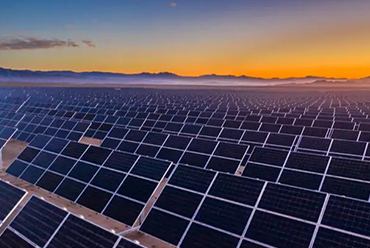
A few days ago, the French Ministry of Ecological Transformation reported that about 484MW of new photovoltaic systems were connected to the grid from January to March, compared with 736MW in the same period last year. As of the end of March, the cumulative installed photovoltaic capacity in France has reached 14.6GW, of which the total in mainland France has reached 13.8GW. Since the beginning of the year, the total capacity of solar projects that have applied for grid connection and have been queued has increased by 16% to 13.4 GW, of which 2.9 GW have signed grid connection agreements. Solar capacity in the first quarter of this year was 3.2TWh compared to 2.4TWh in the same period in 2021. Solar power accounted for 2.2% of France's electricity consumption, down from 3.7% a year earlier. It is understood that New Aquitaine, Auvergne-Rhône-Alpes and Provence-Alpes-Côte d’ Azur accounted for 65% of the newly added grid-connected electricity in the first quarter. At the end of March, France accumulated 66% of the total electricity connected to the grid. UISOLAR as a professional solar mounting manufacture, Europe is always one of our main market. We have more than 11 years exporting experience on solar mounting structure, we are specialized in solar roof mounting, solar ground mounting, solar farm, solar carport etc. If any interested in our product, we’ll be glad to hearing from you.
Read More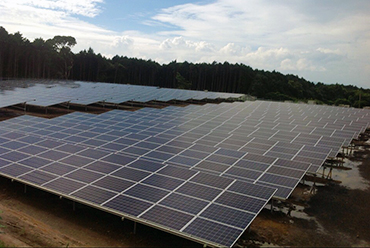
Recently, Mercom India Research released its latest report, India Solar Market Rankings 2022, which released the industry leaders, competitive landscape, market share and shipment rankings of the entire solar supply chain in India. India’s installed PV capacity in 2021 will reach a new high of 10 GW, a 210% increase from 3.2 GW in the same period last year. India has a strong pipeline of utility-scale PV projects, with a total installed capacity of 47.5 GW of utility-scale PV projects by the end of 2021, with another 24.5 GW of installed capacity under auction. Large-scale photovoltaic project developer The report shows that the newly installed capacity of large-scale photovoltaic projects in India is 8.3GW, accounting for 83% of the total installed capacity of new photovoltaic systems, and the development scale of the top ten utility-scale photovoltaic project developers accounts for 68% of the total installed capacity in 2021. Of these, ReNew Power is the largest utility-scale developer in 2021, with most projects coming on stream that year. Engineering, Procurement and Construction (EPC) Service Providers Indian engineering, procurement and construction (EPC) service providers have delayed the development of many photovoltaic projects until 2021 due to the spread of the epidemic, evacuation issues, and land acquisition issues. Many projects for companies providing engineering, procurement and construction (EPC) services move to 2021. Sterling & Wilson is the top EPC player for utility-scale PV projects in 2021. Rooftop PV Project Installer India installed 1.7GW of rooftop PV in 2021, a 138% increase from the previous year. In 2021, projects installed by the top ten rooftop PV system installers in India accounted for 43% of the rooftop PV market share. Tata Power Solar leads the list of rooftop PV installers, accounting for 20% of total installations. Open PV System Installer In 2021, the installed capacity of open photovoltaic systems will increase by 222% compared to the previous year, making it the second highest year on record. First Partner Energy is the largest open PV system installer in 2021. PV module supplier Compared to last year, India's PV module imports in 2021 have surged by 641%. LONGi has been the leading module supplier in the Indian market for two consecutive years, with only one Indian PV module manufacturer making the top five. Chinese PV module prices have risen for seven consecutive quarters, a trend not seen in the past decade, the report said. In the past five years, PV module prices have risen only in the two quarters before the COVID-19 outbreak. PV Inverter Supplier In 2021, string inverters will overtake central inverters in the Indian PV market. Sungrow will be the No. 1 supplier of string inverters in India in 2021, and Shangneng Electric will be No. 1 in centralized inverter suppliers. India’s Ministry of New and Renewable Energy (MNRE) recently issued a new circular extending the certification deadline for P...
Read More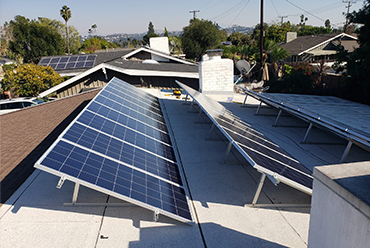
According to "Thailand China Daily" report on April 17, home improvement rooftop photovoltaic power generation is becoming the standard for Thai real estate developers to develop low-rise housing projects in the future. Thanks to the reduction in the cost price of power generation panels and related equipment and the government's increase in the price of grid-connected power purchases, the current investment and cost recovery period has been shortened to 5 years, And the monthly electricity bill can be saved by more than 3,000 baht. At present, the overall cost of investment and installation of home-built rooftop photovoltaic power generation installations in Thailand has dropped by at least 66% compared with 6 years ago. The current price of a set of equipment with a power generation capacity of 3.2 kilowatts is 169,000 baht, or about 32,000 RMB. The development prospects of the home-installed solar power generation market in Thailand are very broad. It is currently estimated that at least 2.3 million households in Thailand are eligible for home-installed solar power generation installations. If 20% of them choose to install this equipment, it means a huge service market worth 137 billion baht. It is reported that major real estate developers in Thailand have made home improvement rooftop solar power generation a standard configuration for current or future low-rise residential projects. Especially in the high oil price environment and Thailand has abundant sunshine resources, the cost of key equipment such as photovoltaic panels will be reduced, and more and more families will choose home-furnished power generation equipment. UISOLAR has a variety of photovoltaic roof mounting solutions to meet the needs of the local market.
Read More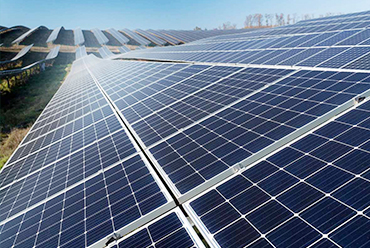
According to foreign media reports, the British government recently released an energy security strategy shows that the goal of increasing the country's installed photovoltaic power generation capacity by five times. The strategy is in response to growing uncertainty in the energy sector, recent high oil prices, and volatility over the past month due to the conflict between Russia and Ukraine. Prime Minister Boris Johnson said: “We are developing a bold plan to expand and accelerate the development of cheap, clean and safe energy in the UK over the next decade, from new nuclear to offshore wind. This will reduce our vulnerability to prices. Volatility affects international energy dependence, and we can achieve energy self-sufficiency using cheaper electricity.” Regarding how to facilitate the deployment of photovoltaic systems, the UK government is planning to negotiate rules to simplify the roll out of photovoltaic systems and will help the photovoltaic industry create 10,000 jobs by 2028, which is almost double what was previously expected. Under the strategy, residential and commercial rooftop PV developers will be consulted on relevant permit development rights to radically simplify the planning process and will consider the best way to utilize public sector rooftop PV systems. The last revision to the licensed development rights for rooftop PV in the UK was in 2015, when the licensed development threshold for rooftop PV was raised from 50kW to 1MW. The UK government will also revise performance standards to make installing PV systems a must-have for new homes and buildings. The recent removal of VAT on residential PV systems in the UK is evidence that the strategy is already supporting the technology. For the installation of large-scale photovoltaic systems, the UK government will negotiate changes to planning rules to strengthen policies in favour of development on non-protected land. This includes ensuring that the community continues to be able to have a voice on developments and working to protect the environment. The British Photovoltaic Association welcomed the release of the strategy, claiming that by 2035, installed PV systems in the UK will grow from the current 14GW to 70GW, a fivefold increase in installed capacity and more jobs. Chris Hewett, chief executive of the British Photovoltaic Association, said, “The UK government’s plan to increase installed PV system capacity by a factor of five by 2035 shows that it now has goals in line with the UK PV industry. The announced plans, CFD auctions and potential Changes to the low-cost financing package could significantly speed up the deployment of PV systems and create thousands of jobs, cut energy bills and make the UK more energy secure."
Read More
Polaris Solar Photovoltaic Network News: According to a report by the South African News 24-hour website on March 24, the fourth South African Investment Conference received a total of 332 billion rand of investment commitments, involving mining, automobiles, energy, pharmaceuticals and other fields. The total investment commitment of the General Assembly reached 1.14 trillion rand, which has achieved 95% of the 1.2 trillion rand investment target set by President Ramaphosa four years ago. Among them, Ford Motor invested R16.4 billion in Gauteng and Eastern Cape provinces to manufacture new Ranger models, African Rainbow Mining invested R11 billion in two platinum mines in Limpopo, Anglo American announced in 2018. The R100 billion investment is followed by an additional R10 billion investment, with Impala Platinum investing R11.8 billion in platinum and Norwegian energy company Scatec investing R16 billion in solar PV and energy storage projects in the Northern Cape.
Read More online service
online service +86 (0592)5663849
+86 (0592)5663849 sales@uisolar.com
sales@uisolar.com solar-mount.au
solar-mount.au